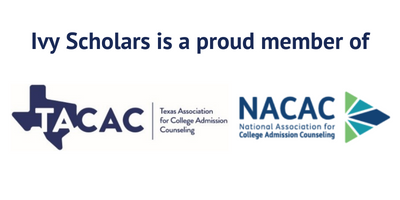Dartmouth is an excellent college, and while not all students like its remote locale and insulated environment, others thrive in it, and indeed seek it out specifically. It’s unsurprising that Dartmouth boasts an incredibly low acceptance rate, with far more students applying than being admitted each and every year. Of course, there are options beyond just acceptance and rejection; students can also be put on the waitlist. Acknowledged as good enough to attend Dartmouth, but without the seats for them. This is disheartening, understandably so, but getting waitlisted is not necessarily the end of your Dartmouth ambitions. In this article, we’re going to look at how Dartmouth’s waitlist works, why they use it, and what you can do to improve your chances of getting in off of Dartmouth’s waitlist. Let’s get started!
How Dartmouth’s Waitlist Works
Dartmouth themselves offers scant information on their waitlist process, most importantly whether or not they rank their waitlist. Some schools do; and students are admitted in order based on where they rank. Others do not, and initiate a fresh round of application reviews to determine which students to admit. Most top ranked schools do the latter, as part of their holistic review, but we can’t say for certain that Dartmouth does so.
On average, they offer fewer than 10% of applicants a spot on the waitlist, and as application numbers increase, this percentage has been decreasing. Waitlist decisions go out generally in May-June, according to their office, though they do warn decisions may take until later in the summer, depending on the year. This indicates they likely do not begin admitting students off the waitlist until after decision day on May 1, though they may begin evaluations before then.
Dartmouth admits students off the waitlist to fill holes in their class left by students choosing to attend other institutions. Not every student admitted to Dartmouth attends; the fewer that do, the more students they admit off the waitlist that year. It is unclear if Dartmouth also tries to fill holes in their class when doing so.
Some colleges and universities will specifically try to fill gaps off the waitlist; so if many of the admitted CS students choose to enroll elsewhere, they admit more CS students off the waitlist. This makes sense as an approach, as these colleges often want to build well-rounded classes. We are uncertain if this is Dartmouth’s chosen approach however.
What are Your Chances of Acceptance Off of Dartmouth’s Waitlist?
This is the first question any student has when they’re put on a waitlist, wanting to know if they should hold out hope, and what their odds really are. This is a difficult question to answer, and to illustrate why this is the case, we’re going to look at data from past years.
Dartmouth releases data on how many students they admit off the waitlist each year on the Common Data Set. Here is what that looks like for the last four years at time of writing:
| Year | Students Waitlisted | Students Accepting Place on Waitlist | Students Accepted Off the Waitlist |
| 2024-25 | 2,589 | 2,189 | 29 |
| 2023-24 | 2,352 | 1,606 | 0 |
| 2022-23 | 2,098 | 1,785 | 41 |
| 2021-22 | 2,669 | 2,120 | 0 |
Tables aren’t always the easiest to interpret, though some things stand out already. To make this even more clear, here’s that same data on a graph:

Between this graph and the chart, we can say a few things for certain. First, the number of students placed on Dartmouth’s waitlist is relatively consistent. It’s not set in stone by any means, but it’s been a bit over 2,000 students each year. The acceptance rate off the waitlist has been significantly less consistent however.
This makes sense; the number of students admitted depends entirely on how many spaces are available, and this in turn depends on the actions of hundreds of other students choosing to attend Dartmouth or head elsewhere for college. There is no way to predict this with any real certainty, and thus no way of predicting what your odds of acceptance off the waitlist will be.
One thing we can say for certain is that these odds are always quite low. While there is usually some chance, the odds of getting in off the waitlist are generally just as long, if not longer, than your overall chances of admission to Dartmouth.
Improving Your Chances of Waitlist Acceptance at Dartmouth
Long odds are different from impossible, and there are concrete steps you can take to improve your chances of getting accepted off of Dartmouth’s waitlist. The first, and most important, is of course accepting your place on that waitlist. As the table above shows, not every waitlisted student does this (though most do), and the only students who are admitted are those who have indicated that they want to be considered for such by accepting a place on the waitlist. This is done easily enough, through your student portal on Dartmouth’s website.
The next thing to do, and the most important for your admissions chances, is writing a letter of continued interest. This is a chance for you to update Dartmouth on everything you have done since the first time you applied. These aren’t required of course, but can improve your odds, showcasing how your candidacy and fit since you applied the first time.
These letters are generally submitted to the school in April, and can be submitted through your student portal. These don’t have a set required length, but shouldn’t be overly long. They do note that they only want written submissions, not pictures or scanned certificates.
What you include in this update depends on what you’ve been up to, but here’s some key things to consider telling admissions officers about:
- That Dartmouth is (and remains) your top choice school. Colleges want to admit students who want them, and letting admissions officers know Dartmouth is your top choice (and that you’ll definitely attend if admitted) is appreciated.
- Any notable extracurricular achievements. You don’t need to update them on every single thing you’ve been up to, but you should cover notable achievements; publishing new research, awards you’ve won, or other notable developments.
- Tie your activities to Dartmouth. If you won a debate tournament, talk about how much you want to join their debate club. If you published research, then discuss labs or professors at Dartmouth you want to collaborate with. Show them how you and the school are a perfect fit for each other.
While Dartmouth encourages students to submit a letter of continued interest, they specifically request that you not come visit the school to speak with admissions officers directly. This makes sense; this is a very busy time of year for admissions officers, and they are unlikely to have time to meet with waitlisted students, especially when Dartmouth waitlists more than 2,000 applicants each year. Your update letter is where you need to show off all you can bring to Dartmouth, and why they should let you in.
Final Thoughts
Getting into a top college is hard, especially for a school like Dartmouth, one which admits a single digit percentage of students each year. Getting waitlisted can be disheartening as well; good enough to attend, but without a seat to fill. We hope that this article has given you the insight you need to understand how Dartmouth’s waitlist process works, and your chances of getting admitted off of it.
Of course, there are plenty of things you can do to increase your chances of getting into Dartmouth in the first place, and one of the best is working with Ivy Scholars. Our mentors are well versed in every aspect of college admissions, and excel in helping students find and apply to the best programs for them. To learn more about how we can help you, schedule a free consultation today.








